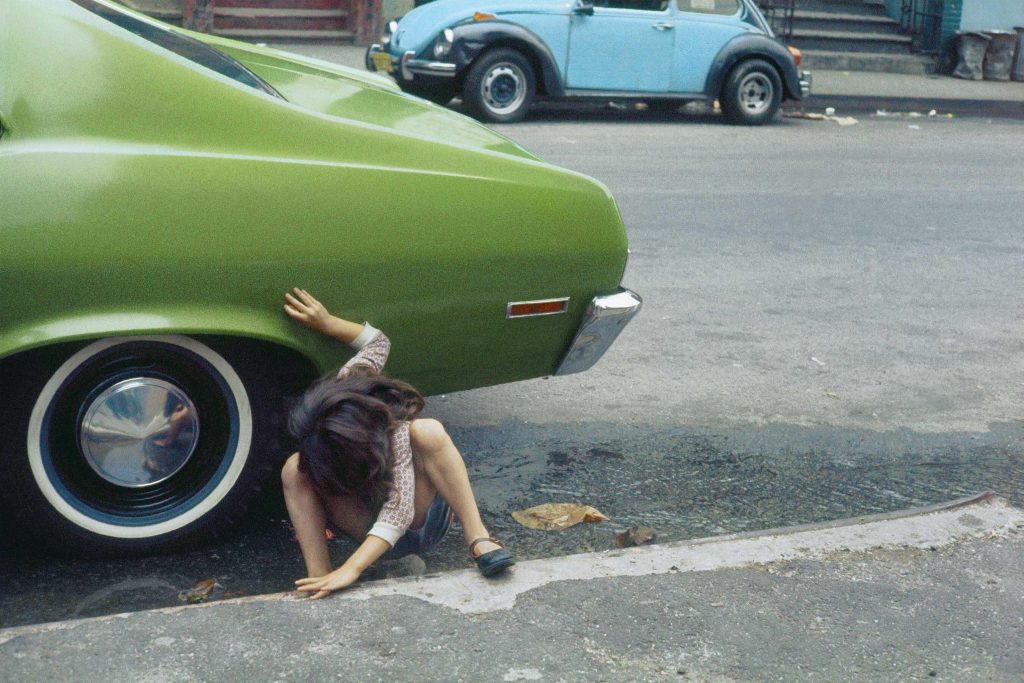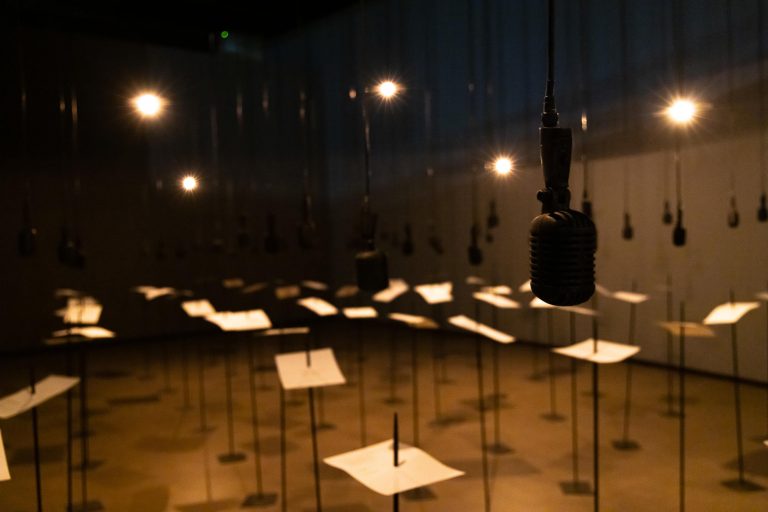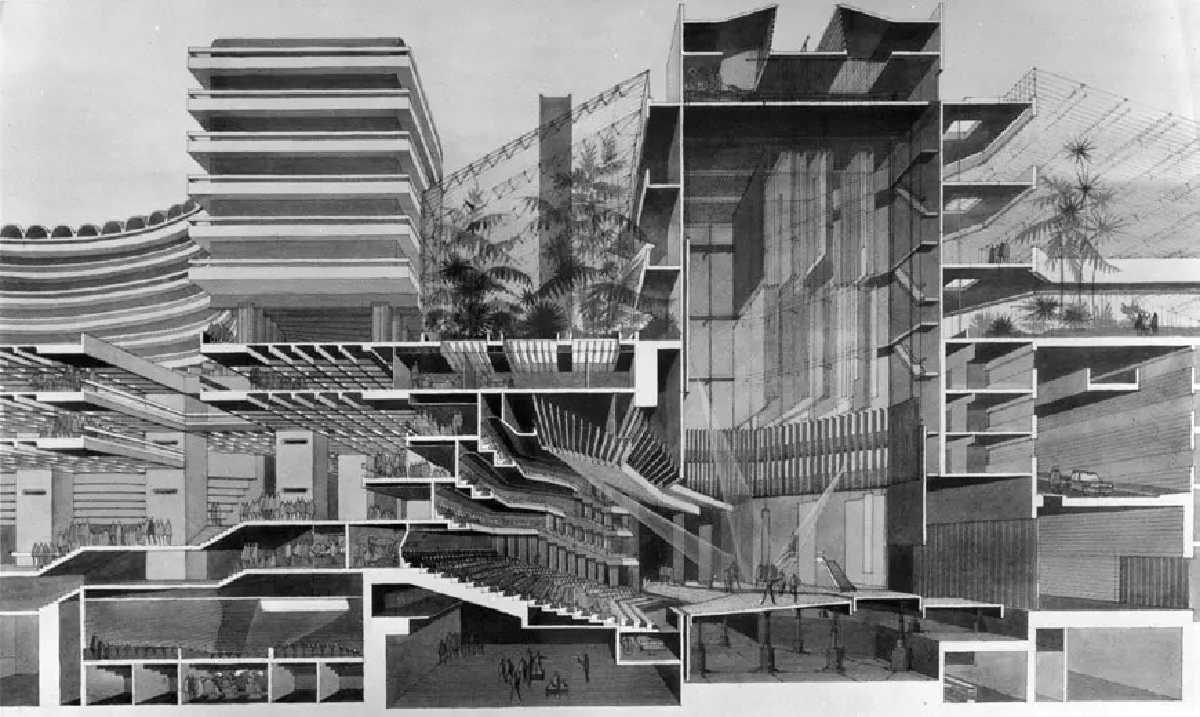In this week’s class, instead of a regular seminar, we all travelled to the Photographers’ Gallery and the Barbican Centre to see a series of exhibitions. The first being Helen Cammock’s Concrete Feathers and Porcelain Tacks. This exhibition occupied the gallery space using the powers of “film, photography, print, text, song and performance” (The Photographers’ Gallery, 2021), focussing on the people of Rochdale in Greater Manchester as subjects. This exhibition felt powerful due to its collection of anecdotal, community spirit which allowed the multi-modal narrative between each piece to feel coherent and reminiscent of an earlier, less contemporary way of life. It appears that spatial inhabitance, within the exhibition as a whole, is an important factor that can be interpreted both physically (through anecdotal reference to and photographic evidence of certain locations) and more conceptually.

Helen Cammock, Concrete Feathers and Porcelain Tacks, 2021
The spaces we inhabit are different shapes to everyone. The comfort we enjoy is not the same from one community to the next - from one home to the next. But some strive more for a sense of collective parity. The Rochdale Principles embody this notion of a shared role, responsibility, and stake in what little or great opportunity and subsistence a community generates.
I found this exhibition extremely thought-provoking, especially in the space where Cammock’s films played out. Each individual story felt so completely different, and yet there was a familiarity that connected each piece. The prevalence of one main object within each story appeared to act as a motif, one being a sewing machine, another a bronze statue and many more. A predominant theme that existed throughout was community. This notion of community spirit seemingly continued into the second exhibition which consisted of Helen Levitt’s street photography.

Helen Levitt New York, 1980 © Film Documents LLC Courtesy Galerie Thomas Zander, Cologne

Helen Levitt New York, 1938 © Film Documents LLC Courtesy Galerie Thomas Zander, Cologne
In each section of photography, it seemed like the subjects involved were connected with each other through different means. For example, in the photo on the right, each secretly-taken train image showed many different types of people, likely from different areas in New York, of alternate socio-economic backgrounds and of different ethnicities. Nonetheless, it could be suggested that photographic representations of community in New York, during the early 20th century, traditionally may have lacked in diversity due to the inherent, Westernised racism that resides within societies. However, this exhibition of street photography did not emit such an effect. Instead, the diversification of photographic subjects appeared vast, featuring people from neighbourhoods such as the Lower East Side, Bronx, and Spanish Harlem, rather than simply focusing on the idealised areas of the city.
Furthermore, the images themselves appeared so fluid in their capturing of events that it felt as though you could hear the background noise or imagine the subject speaking. The collective imagery as a whole felt like snippets from film noir, or different frames in a flip book.

Shilpa Gupta, For, In Your Tongue, I Cannot Fit, 2017-18
The final exhibition we visited was located in the Barbican Centre. Juxtapositionally-named, Sun at Night is “the first major London exhibition by Mumbai-based artist Shilpa Gupta”. Essentially, the work references the fragility within freedom of speech as well as political and artistic “censorship, confinement and resistance” (Barbican, 2021). The project that stood out the most for me is the one shown above. Named ‘For, In Your Tongue, I Cannot Fit’ (2017-18), this immersive experience, located in a pitch-dark room, bombards your aural senses with a hundred voices, all alternating between different languages. Each voice represents a poet who was imprisoned for their opinions or work, and each fragment of poetry prevalent on the spiked paper is their own. I sat in this room for maybe twenty minutes: listening, reading and absorbing. Some moments were calm, some were chaotic. The immortalisation of these poets felt somewhat eerie. In a way, they were still incarcerated; only now, they are trapped within the dark room ladened with spikes. To me, this suggests that their imprisonment is a permanent one, the forces restricting their freedom of speech were so powerful at the time of silencing that, essentially, their silence has turned to protest. It’s needless to say, using Gupta’s empowerment through spoken and written word, their voices can now be heard by the masses.
References
Helen Cammock: Concrete Feathers and Porcelain Tacks (2021) Available at: https://thephotographersgallery.org.uk/whats-on/helen-cammock-concrete-feathers-and-porcelain-tacks (Accessed: 15 December 2021).
Helen Levitt: In The Street (2021) Available at: https://thephotographersgallery.org.uk/whats-on/helen-levitt-retrospective (Accessed: 15 December 2021).
Shilpa Gupta: Sun at Night (2021) Available at: https://www.barbican.org.uk/whats-on/2021/event/shilpa-gupta-sun-at-night (Accessed: 15 December 2021).

